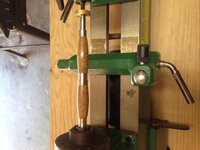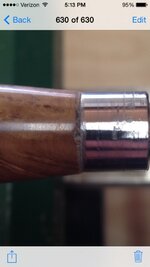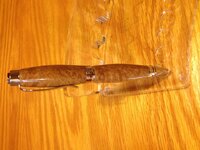AFTACP
Member
Hi guys. I'm in the process of turning 10 cigar pens from brown mallee burl. The first blank (as pictured), is giving me trouble. Both ends of the blank that are facing the tailstock have small tearouts right where the bushing meets the blank. The sides of the blank that are facing the headstock are perfectly fine. I tried filling the small gaps with CA.
I have turned brown mallee before in a slimline and it turned out great. I'm thinking this is a technique issue maybe? Just seems to coincidental to me that it's on both ends facing the tailstock. Also, this occurred before I stated using my skew.
Any help is greatly appreciated!
I have turned brown mallee before in a slimline and it turned out great. I'm thinking this is a technique issue maybe? Just seems to coincidental to me that it's on both ends facing the tailstock. Also, this occurred before I stated using my skew.
Any help is greatly appreciated!



